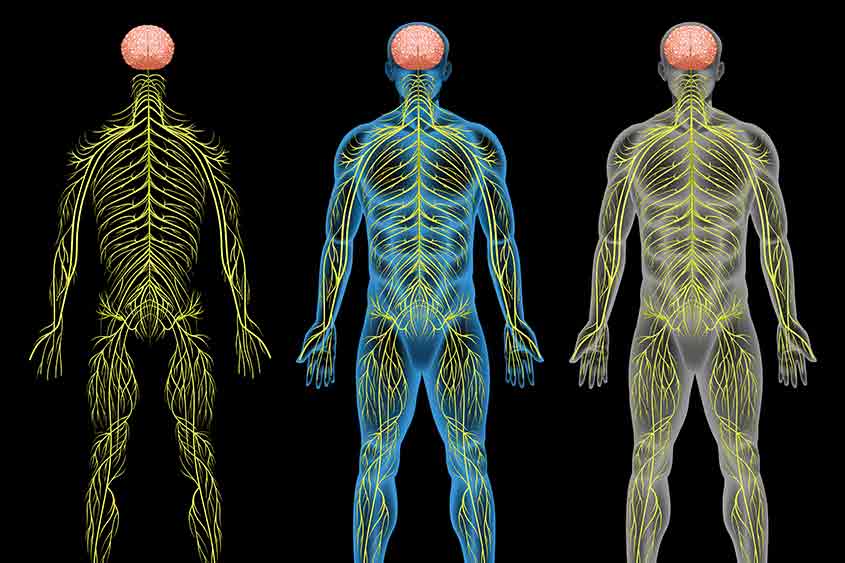Cannabinoids have been utilized for centuries. Yet, scientific inquiry into cannabis and its constituent compounds has historically been constrained. However, in recent years, the landscape has shifted with the growing legalization of medical marijuana in some US states. This shift makes it important to deepen our understanding of cannabinoids and their therapeutic potential. In this blog post, we aim to provide a thorough exploration of what cannabinoids are. We will look at their mechanisms of action within the human body, and their diverse effects on health and wellness.
Let us examine the various types of cannabinoids, focusing on notable compounds like THC and CBD. Then, we will understand how these compounds interact with the body’s endocannabinoid system. All in all, we will highlight their roles in modulating physiological processes such as pain perception, mood regulation, and immune response. Furthermore, we will delve into the promising therapeutic applications of cannabinoids. From pain management and anxiety relief to the treatment of epilepsy, glaucoma, and inflammatory disorders will be covered. This blog aims to illuminate the evolving field of cannabinoid science, shedding light on its potential for contemporary healthcare practices.
Understanding Cannabinoids
Cannabinoids are natural compounds found in the cannabis plant. They interact with the body’s endocannabinoid system, playing a role in various physiological processes. Let’s get deeper into the world of cannabinoids!
There are over 100 different types of cannabinoids identified in the cannabis plant. Among them, the most researched and recognized cannabinoids include:
THC (Tetrahydrocannabinol)
- Properties: THC is the primary psychoactive compound in cannabis responsible for the “high” sensation.
- Effects: It can induce euphoria, alter perception, and affect cognition.
- Therapeutic Uses: THC has potential therapeutic benefits, including pain relief and appetite stimulation.
CBD (Cannabidiol)
Other Cannabinoids
In addition to THC and CBD, there are other significant cannabinoids worth noting:
- CBG (Cannabigerol): Known for its potential anti-inflammatory and antibacterial properties.
- CBC (Cannabichromene): Thought to have pain-relieving and anti-inflammatory effects.
- THCV (Tetrahydrocannabivarin): Reported to suppress appetite and potentially aid in weight loss.
Interaction with the Endocannabinoid System

The effects of cannabis consumption are primarily mediated by the interaction between cannabinoids and the body’s endocannabinoid system (ECS). Here’s a deeper look into how cannabinoids engage with this complex physiological network:
The Endocannabinoid System (ECS)
The ECS is a complex biological system made of receptors, enzymes, and endocannabinoids naturally produced by the body. This system plays a pivotal role in regulating a wide range of cognitive and physiological processes, including:
- Mood Regulation: Influences feelings of pleasure, stress, and relaxation.
- Memory Function: Plays a crucial role in learning, memory formation, and cognitive processes.
- Pain Perception: Modulates the sensation and processing of pain and inflammation.
- Appetite Control: Regulates hunger and signals of satiety.
- Immune Function: Modulates immune response and inflammatory processes.
Mechanism of Cannabinoid Action
When cannabinoids such as THC and CBD enter the body through cannabis consumption, they interact with the ECS. They mimic or enhance the effects of endocannabinoids. This interaction occurs primarily through two types of cannabinoid receptors:
- CB1 Receptors: Predominantly found in the brain and central nervous system. CB1 receptors play a key role in modulating mood, memory, pain perception, and appetite.
- CB2 Receptors: Mainly located in immune cells and peripheral tissues. CB2 receptors influence immune function and inflammation regulation.
Binding and Receptor Activation
Upon entering the bloodstream, cannabinoids bind to CB1 and CB2 receptors located throughout the body. This binding triggers a cascade of biochemical reactions, leading to various physiological effects:
- CB1 Receptor Activation: Influences neurotransmitter release, altering mood, cognition, and pain perception.
- CB2 Receptor Activation: Modulates immune response and inflammation, impacting overall immune function.
Effects of Cannabinoid Interaction
The interaction between cannabinoids and the ECS is responsible for the characteristic effects of cannabis use, including:
- Relaxation & Calming: Cannabinoids can induce a state of relaxation by modulating neurotransmitter release and reducing stress responses.
- Pain Relief: By altering pain perception and inflammation pathways, cannabinoids may provide relief from chronic or acute pain.
- Euphoria & Altered Perception: THC, in particular, can induce euphoria. It can alter sensory perception by binding to CB1 receptors in the brain.
Understanding how cannabinoids engage with the ECS sheds light on their therapeutic potential and physiological effects. Further research into cannabinoid pharmacology and receptor interactions holds promise for developing therapies for various health conditions.
Therapeutic Effects of Cannabinoids

Despite ongoing research limitations, cannabinoids demonstrate potential therapeutic effects. As a result, they are promising candidates for managing a range of health conditions. Here’s an in-depth exploration of the beneficial effects associated with cannabinoids:
Chronic Pain & Inflammation
Cannabinoids, including THC (tetrahydrocannabinol) and CBD (cannabidiol), exhibit promising properties in alleviating persistent pain and reducing inflammation. These compounds interact with cannabinoid receptors (such as CB1 and CB2) in the nervous system. The result? They modulate pain signaling pathways and dampen inflammatory responses.
Persistent pain conditions, such as arthritis, fibromyalgia, and neuropathic pain, often involve abnormal signaling within the nervous system. Cannabinoids can help regulate pain perception by blocking pain signals and reducing inflammation at the site of injury or inflammation.
Studies have demonstrated that cannabinoids, particularly CBD, possess potent anti-inflammatory effects. Moreover, CBD does not produce the psychoactive effects associated with THC. This makes CBD a promising choice for individuals seeking natural pain relief with minimal side effects.
Anxiety Disorders & Depression
CBD has emerged as a potential therapeutic option for managing symptoms of anxiety and depression. Research suggests that CBD interacts with serotonin receptors in the brain. It influences serotonin levels, promoting feelings of calmness and relaxation.
Traditional antidepressant medications often come with unwanted side effects. On the other hand, CBD offers a non-psychoactive alternative for mood disorders. Clinical studies have shown promising results in reducing symptoms of anxiety, social phobia, and generalized anxiety disorder.
CBD’s anxiolytic (anti-anxiety) properties may stem from its ability to modulate neural circuits involved in fear responses and emotional regulation. This makes CBD a valuable candidate for future treatments targeting anxiety-related disorders.
Insomnia and Sleep Problems
Certain cannabinoids, including CBD and cannabinol (CBN), possess sedative properties that can improve sleep patterns and quality. By interacting with receptors in the brain associated with sleep-wake cycles, cannabinoids promote relaxation and reduce anxiety, facilitating restful sleep.
Those with insomnia or sleep disturbances may benefit from cannabinoid therapies. They offer a natural approach to sleep management without the risk of dependency or tolerance associated with traditional sleep medications.
Clinical trials investigating the effects of cannabinoids on sleep architecture have shown promising results. Cannabinoid-based treatments could provide a safe and effective solution for individuals struggling with sleep disorders.
Epilepsy & Seizures
CBD has garnered significant attention as a therapeutic option for treating certain types of epilepsy, particularly in pediatric patients. Epidiolex, a CBD-based medication, has received FDA approval for the treatment of Dravet syndrome and Lennox-Gastaut syndrome. They are two severe forms of childhood epilepsy.
Anti-seizure properties of CBD are attributed to its ability to modulate excitatory neurotransmission and reduce neuronal hyperexcitability in the brain. Epidiolex has demonstrated efficacy in reducing seizure frequency and improving quality of life in patients with treatment-resistant epilepsy.
Ongoing research aims to explore the full potential of cannabinoids in epilepsy management. We can soon expect to identify optimal dosages and treatment protocols for different epilepsy syndromes.
Glaucoma

Cannabinoids have shown potential in reducing intraocular pressure. This feature makes them valuable for patients with glaucoma. Elevated intraocular pressure is a major risk factor for optic nerve damage and vision loss in glaucoma patients.
Currently, more research is needed to establish optimal dosages and delivery methods. However, cannabinoids like THC have demonstrated the ability to enhance ocular blood flow and reduce intraocular pressure. They do so through their interactions with cannabinoid receptors in the eye!
Cannabinoid-based therapies could serve as adjunctive treatments for managing intraocular pressure and preserving visual function in individuals with glaucoma.
Multiple Sclerosis (MS)
Cannabis-based medications have exhibited efficiency in managing symptoms associated with multiple sclerosis (MS). They help reduce muscle spasms, spasticity, and neuropathic pain. Patients with MS often report improved mobility and quality of life with cannabinoid therapies.
The anti-spasmodic and analgesic properties of cannabinoids provide relief from muscle stiffness and pain. As a result, MS patients are able to engage in daily activities more comfortably. Sativex, a THC: CBD spray, is approved in several countries for treating MS-related spasticity.
Cannabinoid-based treatments offer a well-tolerated and effective option for symptom management in MS. As a result, the potential of cannabinoids as adjunctive therapies for neurological disorders is being considered seriously.
Posttraumatic Stress Disorder (PTSD)
PTSD is characterized by persistent re-experiencing of traumatic events, hyperarousal, and avoidance behaviors. Certain cannabinoids, particularly CBD, may alleviate symptoms of PTSD by modulating fear responses and promoting emotional regulation.
CBD’s anxiolytic effects can mitigate anxiety-related symptoms associated with PTSD, reducing intrusive thoughts and improving overall emotional well-being. By enhancing serotonin signaling and modulating stress hormone levels, cannabinoids offer potential relief for individuals struggling with trauma-related psychiatric conditions.
Ongoing clinical studies aim to elucidate the optimal dosages and treatment regimens for utilizing cannabinoids in PTSD management. Once achieved, it will no doubt pave the way for novel therapeutic interventions.
Nausea & Vomiting
Cannabinoids possess potent antiemetic properties, providing relief from nausea and vomiting. This trait is particularly useful to cancer patients undergoing chemotherapy. THC-based medications like Marinol (dronabinol) and Cesamet (nabilone) are prescribed to mitigate chemotherapy-induced nausea and improve appetite.
The anti-nausea effects of cannabinoids are attributed to their interactions with cannabinoid receptors in the brainstem. They modulate neurotransmitter release involved in vomiting reflexes. So, cannabinoid-based therapies offer a natural and effective solution for chemotherapy-induced nausea. This can hugely enhance patient comfort and quality of life during cancer treatment.
Movement Disorders

Cannabinoids have demonstrated promise in managing symptoms of movement disorders, including Tourette Syndrome and Parkinson’s disease. By modulating neurotransmitter activity and muscle tone, cannabinoids help alleviate involuntary movements and tremors associated with these conditions.
THC and CBD interact with dopamine receptors and other neurotransmitter systems implicated in movement control. Thereby, they offer a potential adjunctive treatment option for individuals with movement disorders.
Ongoing research aims to explore the therapeutic potential of cannabinoids in improving motor function. Soon, we will have more knowledge on reducing unwanted motor symptoms in neurodegenerative disorders.
Inflammatory Bowel Diseases (IBD) & Irritable Bowel Syndrome (IBS)
Cannabinoids possess anti-inflammatory properties that could benefit patients with inflammatory bowel diseases (IBD) and irritable bowel syndrome (IBS). CBD and THC may modulate immune responses and gut motility. As a result, they reduce inflammation and control symptoms like abdominal pain and diarrhea.
Therapies based on cannabinoids offer a promising approach for managing flare-ups and improving quality of life in individuals with IBD and IBS. Further studies are needed to optimize cannabinoid formulations and dosages for targeted gastrointestinal symptom relief.
Symptoms of HIV/AIDS
Cannabinoids may alleviate pain, nausea, and appetite loss associated with HIV/AIDS. THC-based medications can stimulate appetite and reduce wasting syndrome. As a result, the help improve nutritional intake and overall quality of life for HIV/AIDS patients.
Patients with HIV/AIDS often experience debilitating symptoms, including chronic pain, nausea, and loss of appetite. Cannabinoid therapies provide multifaceted benefits by addressing multiple symptom domains and enhancing overall well-being in individuals living with HIV/AIDS.
Ongoing clinical trials seek to establish the safety and efficacy of cannabinoid-based treatments for managing HIV/AIDS-related symptoms. Further investigation will elucidate optimal cannabinoid formulations and dosages for targeted symptom management in modern medicine.
Conclusion
To conclude, cannabinoids represent a promising frontier in modern medicine. They offer diverse therapeutic benefits across a spectrum of health conditions. Despite research limitations, compounds like THC and CBD have demonstrated much promise. They are already being used to treat chronic pain, reducing inflammation, and managing mood disorders without the adverse effects associated with traditional pharmaceuticals. CBD, in particular, has emerged as a non-psychoactive alternative for anxiety, depression, and PTSD, providing a holistic approach to mental health treatment.
The evolving understanding of cannabinoid pharmacology underscores the potential for personalized and targeted therapies. From neurological disorders like epilepsy to gastrointestinal ailments and chemotherapy-induced nausea, cannabinoids show versatility in addressing multifaceted symptoms. Continued research into cannabinoid formulations, dosages, and delivery methods will further refine their clinical applications. Ultimately, the exploration of cannabinoids represents a convergence of traditional herbal medicine and contemporary science. We might be on the verge of a new era of patient-centered care rooted in nature’s pharmacopeia!
Consult a healthcare professional before using cannabis products; the advice provided is not a substitute for medical guidance.

